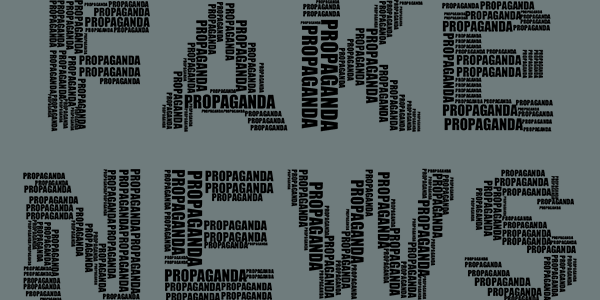Local journalists have key role to play in combating ‘fake news’ in Northern Ireland
With Northern Ireland politics at a dangerous stalemate, Paul Reilly argues that the countering of disinformation by both politicians and an independent local media, and a robust and independent press complaints procedure, is vital for ensuring trust in the news media and creating a healthy information environment.
 Picture: Pixabay/CC0
Picture: Pixabay/CC0
Much of the empirical research on ‘fake news’ to date has focused on how disinformation created in ‘troll farms’ was shared on social media in order to sow confusion and disunity during elections. Claire Wardle argues that this ‘information disorder’ is the result of the increasing pollution of our information ecosystem, rather than one confined to professional news media. She identifies seven types of mis- and disinformation, including satirical, misleading, false and fabricated content. However, thus far, there has been little discussion of what impact such mis-and disinformation has on community relations within divided societies such as Northern Ireland. Certainly, some of the contextual factors associated with information disorder appear to be present.
First, there has been a significant decline in public trust in Northern Ireland’s political institutions over the past decade, in no small part due to scandals such as ‘Irisgate’ and ‘cash for ash.’ Only 32% of respondents in the 2015 Northern Ireland Life and Times Survey said that they trusted the Northern Ireland Assembly to work in their best interests, compared to 60% when the DUP and Sinn Féin formed a powersharing Executive in 2007. Public anger at elected representatives also increased after it was revealed that MLAs would continue to receive their salaries despite the collapse of the Stormont Executive in January 2017. Second, citizens appear to have low levels of trust in the mainstream media, despite television being the main source of news for 72% of adults in Northern Ireland. One survey found that only half of participants (50.2%) trusted the content posted on websites of news media organisations. Participants did not trust the news media because of its tendency to exaggerate the differences between the main parties, and failure to promote healthy debates on key political issues. Finally, there has also been evidence to suggest that Northern Irish citizens may not actively fact-check information viewed online. An Ofcom report found that only 59% of internet users in the region did so, compared to 67% of users across the UK.
Some politicians appear to have contributed to this erosion of public trust in the news media. For example, DUP MLA Jeffrey Donaldson dismissed as ‘fake news’ media reports that funding resulting from the DUP’s deal with the minority Conservative government was under threat. There were also revelations that members of the DUP and Sinn Féin were involved in #boycottnolan, a campaign encouraging supporters to boycott Stephen Nolan’s flagship BBC Radio Ulster show. Yet, my research into how social media was used during contentious parades and protests in Northern Ireland suggests that local journalists play a key role in countering ‘fake news’. During the 2014 Ardoyne parade dispute, a picture was shared on Twitter apparently showing a nationalist protester holding aloft a placard with a mock road sign declaring that the Orange Order were not welcome in the area. The crude photoshopping of the placard led to much scepticism amongst tweeters about the authenticity of the image. These tweeters pointed to an image uploaded by BBC Northern Ireland journalist Kevin Sharkey which revealed that the slogan on the placard had in fact originally read ‘Love Thy Neighbour’ (see below). A similar trend emerged during the 2015 parade; a viewer of Russia Today’s livestream showing the standoff between loyalists and the police tweeted that Chief Constable George Hamilton had been injured by an object thrown by one of the rioters. This misinformation flow was corrected within a few hours by local journalist Rodney Edwards, who confirmed he had spoken to Hamilton and that he had not been present at the scene. Overall, local journalists paid very little attention to mis- and disinformation in their coverage of these episodes, despite often having played a key role in debunking them. In this way, they did not inadvertently amplify this misinformation, nor provide any publicity to the disinformation propagators who created such content.
Ardoyne shops pic.twitter.com/eGlWaCJ51H
— Kevin Sharkey (@tv_KevinSharkey) July 12, 2014
The survival of an independent and free press within Northern Ireland is a pre-requisite for reducing the pollution of its information ecosystem. This may require the overhaul of the business model of local media, with subsidies replacing revenues obtained via ‘clickbait’ digital advertising. Local politicians should also refrain from using the term ‘fake news’ in an effort to discredit what they perceive as ‘hostile’ or ‘negative’ media coverage. They should be free to respond directly to claims made by others, but this should not involve impugning the character of individual journalists or threatening to boycott certain outlets. Complaints about ‘unfair’ coverage should be made through the appropriate channels to organisations such as Ofcom, and elected representatives should publicly reaffirm their commitment to press freedom as part of their efforts to restore the Executive.
This post represents the views of the author and not those of Democratic Audit.
About the author
 Paul Reilly is Senior Lecturer in Social Media & Digital Society in the Information School at the University of Sheffield.
Paul Reilly is Senior Lecturer in Social Media & Digital Society in the Information School at the University of Sheffield.





 Democratic Audit's core funding is provided by the Joseph Rowntree Charitable Trust. Additional funding is provided by the London School of Economics.
Democratic Audit's core funding is provided by the Joseph Rowntree Charitable Trust. Additional funding is provided by the London School of Economics.